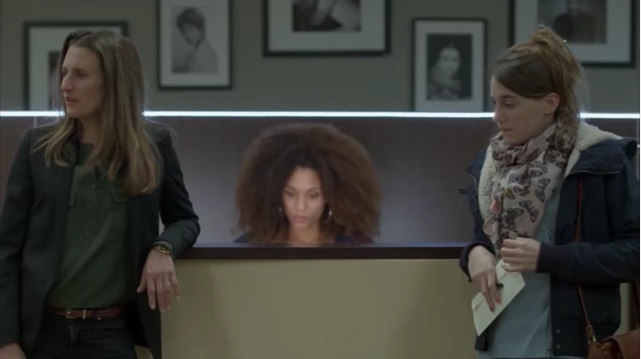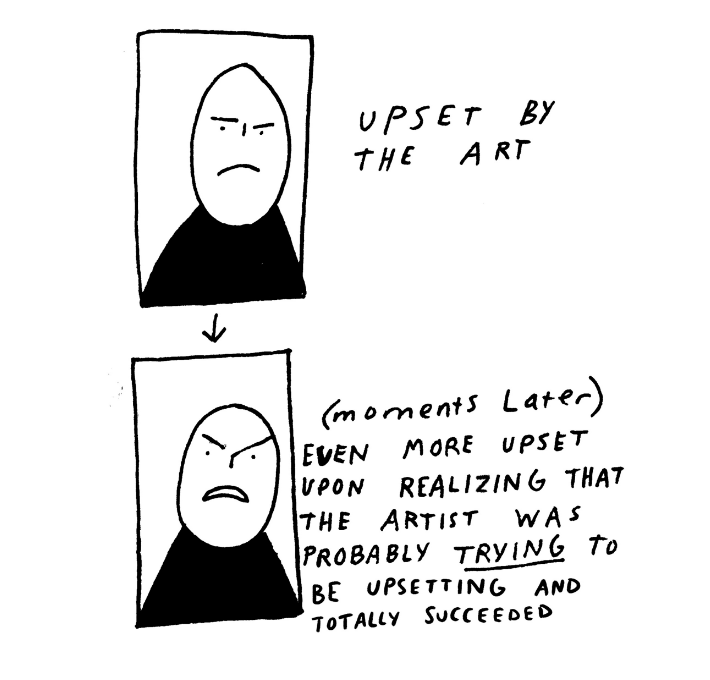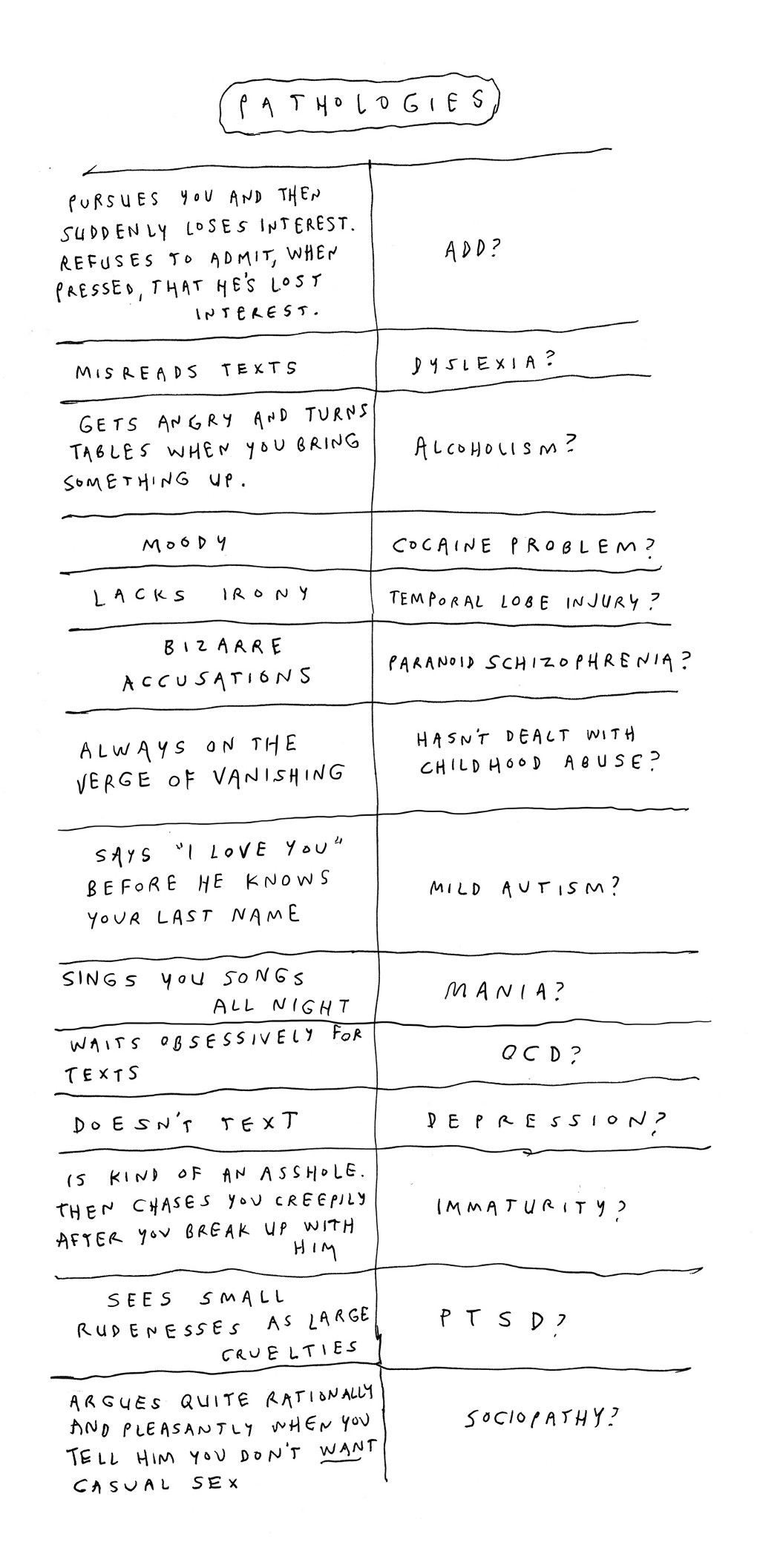Quit Your Job And Stream "Call My Agent" Right Now
It’s a French television show that actually makes sense.

“Call My Agent” — or Dix Pour Cent, as it is called in its native land — is a French Netflix Original revolving around ASK, a Parisian talent agency. At its center is twenty-two-year old Camille (Fanny Sidney), who moves from the Cote d’Azur to Paris hoping to find work in the film industry. She is abruptly hired as an assistant in ASK’s book-filled, many-windowed office which immediately causes Some Problems. I will not reveal these Problems because Donald Trump is about to become your president and you need to savor every moment of mildly pleasurable narrative surprise as a sort of bulwark against the horrified shock which will, soon enough, dominate your actual emotional life.
Wide-eyed, provincial and good-hearted, Camille is easy to root for and a fine enough center of this entertaining and relievingly French story, but she’s not especially fascinating. Or at least that’s how I felt. Someone else might watch this show and say, “My favorite character is Camille,” and I would nod at them and say “Oh, cool,” but as soon as they turned around I would mouth, “Camille? Really?”
At any rate, I care about Camille, and I want what’s best for her, but it’s the agents themselves I really want to hang around with. I most strongly identified with the beautiful, gay, bitchy, refreshingly large-nosed—I doubt we will ever see a woman who is not a character actress with a nose this big on an American television show—Andréa (Camille Cottin). I was also fond of her BFF, the fortyish Gabriel (Grégory Montel) who is boyishly attractive, romantically shy, and lacks the decisiveness Andréa has too much of. Then there is mid-fifties Mathias (Thibault de Montalembert) — the most senior partner, who has expensively cut flopping gray forelocks and the assured air of a man who has gotten very rich pretending to love art more than money. My favorite character is the late sixties-ish Arlette (Liliane Rovére, in her eighties in real life!) the poorest and artsiest of the bunch. She retains a whiff of rock-star worship in her otherwise age-appropriate dress and it’s easy to imagine her fifty years ago, shopping and scoring coke with Anita Pallenberg. Arlette goes everywhere with her little dog, named Jean Gabin after the famous French actor.
Other characters include Gabriel’s assistant, the very gay, very weird, very French Hervé (Nicolas Maury); the ridiculously gorgeous receptionist Sofia (Stéfi Celma), who wants to be an actress; and Mathias’s assistant, Noémie (Laure Calame) who worships him with a dotty ardor that might be offensive if I did not just love this show so unreservedly and—given that our president-elect is a known sexual predator—also not really give a shit.
“Call My Agent” is not the best television show ever. But it’s good. It’s solid entertainment for adults who don’t necessarily want to watch someone die in an awful manner before they fall asleep, and also for adults who thought “Entourage” would be good until they realized it was just about a bunch of douches who were all dudes. It’s funny and well-acted, a delightful foray into a world where rich, slightly damaged, slightly odd people try to please and make money off of richer, more damaged, even more eccentric people. In Paris. Another big bonus of this show: It makes sense. No one will ever have to write a think piece called “What ‘Call My Agent’ Tells Us About Plato and The Human Heart.”
But it’s not a big piece of fluff either, or certainly not just one. There are deeply tender moments, like when Arlette lights a dejected Camille’s cigarette and essentially tells her life is hard but that it’s still O.K.—great advice if I ever heard it. But the moment I liked best, and found most personally meaningful, comes when Arlette and Andréa are headed to see a late-night film after a long day, Jean Gabin in tow. Arlette says to a heartbroken Andréa, “When things are getting you down, there’s always the movies.” I am going to substitute “television” for “the movies” in this sentence, and promise you that “Call Your Agent” will give you six blissful hours in a world where all anyone does is drink wine, traverse nicely designed rooms in expensive shoes, and argue about how much money people should get paid to make art. I loved it so much. If you have read this far I am sure that you will too.
Kiln, "Crane Ensemble"
Here’s what the immediate future will be like.

The latest installment of Ruth Curry’s Coffee & TV newsletter (Do you subscribe? You should subscribe.) links to a piece about how uncertainty causes more anxiety than actual pain, which explains why everyone is in such a terrible mood lately, because of the not-knowing just how bad things are going to be. Many of us are cycling through denial and despair (it is at least a short cycle), and with two weeks left before everything becomes official, I want to do my part to help you relieve some of the stress which weighs so heavily on you in this time of confusion: Things will be bad. As bad as you expect things to get, that is what you are about to at minimum receive. Terrible things will happen and for at least two years — and almost certainly longer — you will have to sit there and watch them happen. You may even get used to it, which will almost be as bad as the things that are happening, but will of course not be as bad, because the things will be pretty awful, especially to the people they are specifically happening to. Many of the things will happen gradually enough that there will be plausible deniability on the part of the people doing the things that they have even been done, which will make you feel more futile and crazy because it will be obvious that these bad things are happening but without concrete evidence you will be easily dismissed by anyone with an interest in pretending that everything is okay, but do not be doubtful or uncertain about it: Bad things are going to happen. Now you know. I hope you feel a little better.
Anyway, here’s some music. It’s pretty. Enjoy.
Takénobu, "Snow Day"
Just because.

Dress warm if you’re going out there, but don’t feel bad about staying in. Enjoy.
New York City, January 5, 2017

★★ An unambiguously wintry wind came to meet the outbound schoolchildren at the front door. The clouds and the cold were both solid and even. Broken pieces of ice crust tilted up out of a blackish slush puddle. Something like sun gathered strength until it really was sun, and a beam of light found its way off a south-facing fifth-floor window and into the office. Then that interlude, a day in miniature, passed, and the clouds thickened over everything again.
Disruption On The Waterfront
How mobbed up is New York Harbor these days?

The waterfront today has largely receded from the city’s consciousness and even its geography. And to some extent, so has the mob. Decimated by mass prosecutions over the last three decades, New York’s five crime families have struggled to adapt. While there have been some new, profitable ventures, like online gambling, the waterfront still exerts its own pull. Mr. Arsenault referred to the waterfront as the mob’s “last candy jar.”
Can the mob automate faster than the shipping industry? Does it need to? This is an interesting read if you’re a certain sort of New Yorker (i.e., one with an interest in the mob and the waterfront).
Color Therapy
The appetite-suppressing, calming pink paint

In a blog post this week, Kendall Jenner revealed that she chose which color to paint her dining room after learning about a shade of “appetite-suppressant pink.”
I went to dinner with friends and they had just gone to the “Human Condition” exhibition at a former hospital in LA.
They were telling me there’s a pink room at the exhibit that had an explanation of the color choice: Baker-Miller Pink is the only color scientifically proven to calm you AND suppress your appetite. I was like, “I NEED this color in my house!” I then found someone to paint the room and now I’m loving it!
It turns out Baker-Miller pink is almost identical to Pepto-Bismol pink, and like Pepto-Bismol, it neutralizes situations.
According to the Journal of Orthomolecular Medicine:
The effect of exposure to Baker-Miller pink is purported to reduce aggressive and violent behaviour… reduce strength… and lower blood pressure and pulse rate… These reported effects were achieved by exposing individuals to a variety of visual stimuli that were painted Baker-Miller pink… The length of exposure to the colour is reported to be relevant with optimal effects being achieved within fifteen minutes of initial exposure.
So essentially if you’re feeling stressed or hungry, fifteen minutes of Baker-Miller visuals are proven to give you a sense of relief. And while the calmness side effect seems pretty universally pleasant, the appetite suppressant part strikes me as a little… bleak in the dining room of a fashion model. But hey, to each her own formal living space.
Other buildings that have experimented with Baker-Miller pink include: jails, psychiatric hospitals, and an art center. While that sweet spot of fifteen minutes proved to reduce violent and aggressive behavior, some jails apparently reported that inmates would start to “scratch the paint from the walls with their fingernails” if they were left for much longer. So eat quick, Kendall. Shuffle your guests out to the living room.
The good news is the paint seems super easy to make in the event of any chipping. I’m not a contractor, but look at this recipe:
Baker-Miller pink… is produced by mixing one pint of outdoor semi-gloss red trim paint and one gallon of pure white indoor latex paint.
And beyond paint, there are other Baker-Miller fantasies to explore. Take this zip-up sweatshirt, which acts as an “isolation tank” for the wearer.

It boasts a zippered hood to close the world out if need be, a soundtrack of something they call “pink noise” which contains “every frequency the human ear can hear,” and “two large asymmetrical pockets [that] act exactly like slings for when you’re trying to save energy, or are simply too exhausted to move.” It’s like a thunder vest for dogs.
So if you want to have a Baker-Miller weekend, just head to the hardware store and tell the guy you need RGB code: R: 255, G: 145, B: 175. They’ll hook you up.
What Will Survive Of Us Is Laughs
Jonathan Coe on the uses of satire

Jonathan Coe, whose What a Carve Up! belongs on any list of the 20th century’s funniest books, asks if satire will save us in the age of Trump. The answer, of course, is no. Nothing will save us in the age of Trump, not satire, not self-interest, not moral suasion, not proof that salvation is necessary nor prayer for its deliverance. None of us will be saved. Still, the idea brings a smile, and maybe that’s the point.
Jonathan Coe: will satire save us in the age of Trump?
Coe worked this same territory several years back while considering the career of Boris Johnson, and it is worth a read, as are all the books mentioned in Coe’s Guardian piece above, including his own, but particularly Joseph Heller’s Good as Gold. Satire won’t save us and nothing else will, but as someone else said recently, it will be good to have a couple a books by your side as you wait for the radiation poisoning to do its work.
LRB · Jonathan Coe · Sinking Giggling into the Sea: Giggling along with Boris
Beer, Brats, and Bündhosen
The last nights of Der Rheinlander, Portland’s oldest German restaurant.

When one middle-aged customer ordered Der Rheinlander’s small beer, the bartender set a tanker of Ayinger Celebrator in front of him. “That’s our smallest,” he said with a smile. This guy didn’t mind. It was Wednesday night; he’d come to Portland, Oregon’s oldest German restaurant to drink and eat sausages and sing with the wandering accordion players wearing bundhosen. Also, to say goodbye. Open since 1963, Der Rheinlander was closing in ten days.
At 7:15 p.m., there was a forty-five minute wait to eat at Gustav’s, the attached bar. The Rheinlander side was all reserved. “All reserved?” asked an irritated-sounding woman leaning over the front desk. “All reserved,” the young hostess said. She wore a long black ponytail and a high black choker. If you wanted to sit, you had to find a stool at Gustav’s. A crowd filled the vestibule, nearly blocking the front door. Customers leaned against the walls staring at their phones, listening for staff to call their names. Outside, a chilly December fog laid frost on car windshields, and the Rheinlander sign on Sandy Boulevard advised passersby “BOOK NY RESERVATIONS 2DAY.” In early 2017, Venerable Properties LLC will demolish the building to erect a health care clinic.
Portland is a food Mecca, where chefs survey new culinary frontiers and pioneer experimental business models, yet increasingly few artifacts from its less glamorous past remain. The cozy wood-lined Lotus Cardroom and Cafe downtown closed after ninety-two years in business. Veritable Quandary, serving Northwest cuisine in an old brick building near the river, closed after forty-five years. Founded by Portland’s “first celebrity chef,” Horst Mager, who dined with Julia Child and started what became Le Cordon Bleu College of Culinary Arts, Rheindlander was an institution.
Like many such local mainstays, developers would replace Der Rheinlander’s oddity and charm with something more lucrative, while slick t-shirts and bumper-stickers marketed Portland’s old oddity and charm. But the developers weren’t all bad. Venerable Properties LLC had turned the vacant Washington High School into an 850-seat concert venue and renovated the gorgeous 1907 White Stag Building downtown as University of Oregon’s Portland headquarters. Rheinlander’s replacement would provide patients everything from cardiology to behavioral health services.

As families ate in blue booths beneath hanging circular German crests emblazoned with eagles and griffins, five house musicians filed in caroling “And God bless you and send you a Happy New Year!” One singer wore a heavy red and green dress of faintly alpine provenance. The bald accordion player sweated profusely, even in short-shorts and lederhosen. A woman sawed into her schnitzel.
Rheinlander’s interior was a maze of separate dining rooms. Each had a theme: medieval church, small German gasthaus inn, cramped Bavarian closet. People packed every one. Inside the loud, reddish, main dining room, the same band now crowded a table of eleven, singing “Stille Nacht.” Three diners were in full Oktoberfest dirndl dress. Servers rushed past with trays of beer, and customers waiting for tables out front had migrated back in to film the festivities. One told her friend, “Okay, I have to find a bathroom in this place. Where are we?” The accordion player yelled, “Now in English!”
The castle Rheinlander was composed of three separate unsalvageable buildings anyway, seasoned and fused like weisswurst inside an unnatural casing of tan plaster and bluish paint. The aesthetic mixed a 1960s visions of the old country with the flair of a miniature golf park. Stained glass, a turret, second-story windows for rooms that didn’t exist — all identified the place as Germanic but didn’t hint at the high quality of its homemade boar sausage and sauerbraten. (Indeed, their famous fondue is Swiss.) And the Portland restaurants Prost! and Stammtisch had more “authentic” German sausages and sauerbraten, but sometimes dinner demands ambience over authenticity. Nü Portland’s chic white subway tile and Edison bulb aesthetic couldn’t compete with Bavarian camp. Yes, Rheinlander’s food was rich, but the festive, unapologetic kitsch felt as comfortable as your grandma’s house.

When a silver-haired man in a mauve shirt and beige slacks entered the reddish room, customers left their tables to pose for photos with him.
“I was looking for you,” one brunette said. “I came hopin’ I’d see you.” She lived in Milwaukie, twenty minutes away. A waitress pushed past holding two huge sausage plates. His name was Mira. Born in the former Czechoslovakia, he’d played accordion at Der Rheinlander for twenty years. The woman typed Mira’s contact information into her phone then kissed his cheek. “I love you,” she said. He patted her back, “I love you!” and they went their separate ways. At a computer terminal in a rear hall, Mira strapped his heavy silver instrument to his chest and adjusted the waist strap, then he clocked back in. “Time to play,” he said in a heavy accent. “Break is over.”
Diners could request songs. Accordionists played everything from yodeled folk tunes to the Spiderman theme. Not everyone appreciated it. “The musical performance impeded conversation,” said one Yelp reviewer who must have mistaken this for a Wienerschnitzel hot dog chain. By 7:45 p.m., the crowd up front had shrunk in half. Someone called in an order of mashed potatoes as a party of four swarmed the front desk, asking the cranky hostess about the wait. Boys in white shirts with dark ties hustled by. An elderly man dabbed food off his moustache. The middle-aged man at the bar ordered a Maßkrug, which holds one litre of beer, whatever a litre is. The phone kept ringing.

A smiling diner filmed Doug, the second, solitary accordion player. Doug played in a corner, staring at the carpet. At one point, he walked through the hall between rooms and opened an unseen hatch on the wall, stashing his keys inside and turning what appeared to be dials on the sound system. Under the carpet in that same hall, a set of stairs led to a secret cellar filled with what one server called “German crap.” “Crests, scrolls, plates,” he said, “you name it.” Customers walked over padlocked hatch without noticing. “It’s creepy,” the server said. The company would auction some of the cellar’s contents, keep a little and spread the rest to their three suburban Gustav’s locations. Rheinlander employees also had the option to transfer to other Gustav’s. Not everyone wanted to. This guy didn’t know where he wanted to work yet. Neither did one of the bartenders. First, they had to help dismantle Rheinlander’s interior and catalog all that crap.
The middle-aged man at the bar stared into his bier. Why drink Celebrator tonight, he thought? This was a funeral, but the accordion player’s joyful racket suggested otherwise. It seemed to say: Sing, dance, order the strudel. Man muss die Dinge nehmen, wie sie kommen, right? You must take things as they come. Everyone will live to sing “The Hofbräuhaus Song” again, even if it’s in the burbs. From inside these windowless rooms, the world’s one big Deutschland Disneyland anyway. As that old oom-pah song says, “And when the first beer mug is empty, the waitress Reserl soon brings you more,” and you count down, off-key and slurring, eins, zwei, g’suffa, before taking another drink.
Things I Read This Week And Liked
Friday reading roundup

As I was writing this column, I came across a post by my friend Lauren Hoffman, a writer for Vulture and Cosmopolitan: “I’ve made many real/good friends on Twitter but I guess if I met all my friends working at, like, the mall and the mall became a tacit endorsement of fascism I would keep the friends but stop going to the mall.”
David Byrne offered a different version of a guy. David Byrne was not going to beat you up, right? He was a huge relief.
Filmmaker Mike Mills shares seven objects that inspired 20th Century Women | The Cut

A Guide t0 Museumgoers’ Body Language | Hallie Bateman for The New Yorker
Context allows people to assume, and also determines whether or not someone is assuming in your favor. Despite a lifetime of people demanding to know “what” I am, I never actually know until someone else tells me.
Explaining My Multiracial Identity (So Others Don’t Do It For Me) | Jaya Saxena for Catapult
Mm, clicky: How to make Barbie salad | Live feed of two Google Homes talking to each other | Aliens are trying to speak to us imho
Diagnoses For Dating Behavior
The Adventures of Liana Finck

Liana Finck is a New Yorker cartoonist and graphic novelist. She posts autobiographical cartoons on Instagram.
